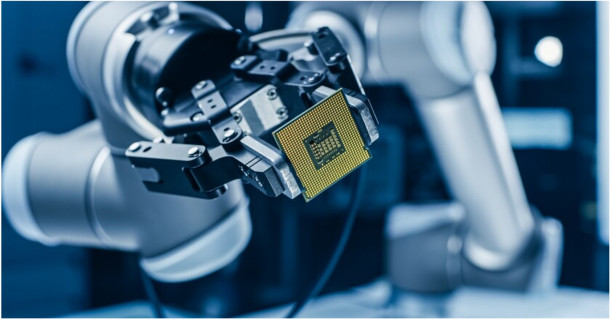The 21st episode of the Better cities – the contribution of digital technology-series is about priorities for digital healthcare, often referred to as eHealth.
The subject is broader than what will be discussed here. I won't talk about the degree of automation in surgery, the impressive equipment available to doctors, ranging from the high-tech chair at the dentist to the MRI scanner in hospitals, nor about researching microbes in air, water and sewerage that has exploded due to the covid pandemic. Even the relationship with the urban environment remains somewhat in the background. This simply does not play a prominent role when it comes to digitization in healthcare. The subject, on the other hand, lends itself well to illustrate ethical and social problems associated with digitization. As well as the solutions available in the meantime.
The challenge: saving costs and improving the quality of care
The Netherlands can be fortunate to be one of the countries with the best care in the world. However, there are still plenty of challenges, such as a greater focus on health instead of on disease, placing more responsibility for their own health on citizens, increasing the resilience of hospitals, paying attention to health for the poorer part of the population, whose number of healthy life years is significantly lower and, above all, limiting the increase of cost. Over the past 20 years, healthcare in the Netherlands has become 150% more expensive, not counting the costs of the pandemic. Annual healthcare costs now amount to € 100 billion, about 10% of GDP. Without intervention, this will rise to approximately €170 billion in 2040, mainly due to an aging population. In the meantime, healthcare costs are very unevenly distributed: 80% of healthcare costs go to 10% of the population.
The most important task facing the Netherlands and other rich countries is to use digitization primarily to reduce healthcare costs, while not forgetting the other challenges mentioned. This concerns a series of - often small - forms of digital care. According to McKinsey, savings of €18 billion by 2030 are within reach, if only with forms of digitization with proven effect. Most gains can be made by reducing the administrative burden and shifting costs to less specialized centers, to home treatment and to prevention.
Information provision
There are more than 300,000 health sites and apps on the Internet, which provide comprehensive information about diseases, options for diagnosis and self-treatment. More and more medical data can also be viewed online. Often the information on apps is incomplete resulting in misdiagnosis. Doctors in the Netherlands especially recommend the website Thuisarts.nl, which they developed themselves.
Many apps use gamification, such as exercises to improve memory. A good example of digital social innovation is Mirrorable, a program to treat children with motor disorders because of brain injury. This program also enables contact between parents whose inputs continuously help to improve exercises.
Process automation
Process automation in healthcare resembles in many respects automation elsewhere, such as personnel, logistics and financial management. More specific is the integrated electronic patient file. The Framework Act on Electronic Data Exchange in Healthcare, adopted in 2021, obliges healthcare providers to exchange data electronically and prescribes standards. However, data exchange will be minimal and will only take place at a decentralized level to address privacy concerns. The complexity of the organization of health care and the constant discussions about the content of such a system were also immense obstacles. That's a pity because a central system lowers costs and increases quality. Meanwhile, new technological developments guarantee privacy with great certainty. For example, the use of federated (decentralized) forms of data storage combined with blockchain. TNO conducts groundbreaking research in this area. The institution applies the principles of federated learning along with the application of multi-party computation technology. These innovative technologies enable learning from sensitive data from multiple sources without sharing this data.
Video calling
The recent eHealth monitor of the RIVM shows that by 2021 almost half of all doctors and nurses had had contact with patients with video calling, while this hardly happened in 2019. Incidentally, this concerns a relatively small group of patients. In the US there was an even larger increase, which has now been converted into a sharp decline. It seems that in the US primary health care is reinventing itself. Walgreens, the largest US drugstore chain, will begin offering primary care in 1000 of its stores. Apparently, in many cases, physical contact with a doctor is irreplaceable, even if (or perhaps because) the doctor is relatively anonymous.
Video calling is not only important for care provider, but also for informal caregivers, family and friends and help to combat loneliness. Virtual reality (metaverse!) will further expand the possibilities for this. TNO is also active here: The TNO media lab is developing a scalable communication platform in which the person involved (patient or client), using only an upright iPad, has the impression that the doctor, district nurse or visitor is sitting at the table or on the couch right in front.
Self-diagnosis
The effectiveness of a remote consultation is of course served if the patient has already made a few observations him- or herself. 8% of patients with chronic conditions already do this. There is a growing range of self-tests available for, for example, fertility, urinary tract infections, kidney disorders and of course Covid-19. There are also home devices such as smart thermometers, mats that detect diabetic foot complications, and blood pressure meters; basically, everything that doctors often routinely do during a visit. The GGD AppStore provides an overview of relevant and reliable apps in the field of health.
Wearables, for example built into an i-watch, can collect part of the desired data, store it for a longer period and, if necessary, exchange it with the care provider.
More advanced are the mobile diagnosis boxes for emergency care by nurses on location, such as ambulances. With a fast Internet connection (5G), specialist care providers can watch if necessary.
A small but growing group of patients, doctors, and researchers with substantial financial support from Egon Musk sees the future mainly in chip implants. This would allow not only more complete diagnoses to be made, but also treatments to be carried out. Neuralink has developed a brain implant that improves communication with speech and hearing-impaired people. The Synchron brain implant helps people with brain disorders perform simple movements. For the time being, the resistance to brain implants is high.
Remote monitoring
Meanwhile, all these low-threshold amenities can lead us to become fixated on disease rather than on health. But what if we never had to worry about our health again? Instead, the local health center watches over our health thanks to wearables: Our data is continuously monitored and analyzed using artificial intelligence. They are compared with millions of diagnostic data from other patients. By comparing patterns, diseases can be predicted in good time, followed by automated suggestions for self-treatment or advice to consult a doctor. Until then, we have probably experienced nothing but vague complaints ourselves. Wouldn't that be an attractive prospect?
Helsinki is experimenting with a Health Benefit Analysis tool that anonymously examines patients' medical records to evaluate the care they have received so far. The central question here is can the municipality proactively approach people based on the health risk that has come to light because of this type of analysis?
Medics participating in a large-scale study by the University of Chicago and the company Verify were amazed at the accuracy with which algorithms were able to diagnose patients and predict diseases ranging from cardiovascular disease to cancer. In a recent article, oncologist Samuel Volchenboom described that it is painful to note that the calculations came from Verify, a subsidiary of Alphabet, which not only used medical data (with patients’ consent), but also all other data that sister company Google already had stored about them. He adds that it is unacceptable that owning and using such valuable data becomes the province of only a few companies.
Perhaps even more problematic is that these predictions are based in part on patterns in the data that the researchers can't fully explain. It is therefore argued that the use of these types of algorithms should be banned. But how would a patient feel if such an algorithmic recommendation is the last straw? It is better to invest in more transparent artificial intelligence.
Implementing digital technology
Both many patients and healthcare professionals still have doubts about the added value of digital technology. The media reports new cases of data breaches and theft every day. Most people are not very confident that blockchain technology, among other things, can prevent this. Most medical specialists doubt whether ICT will reduce their workload. It is often thought of as some additional thing. Numerous small-scale pilot projects are taking place, which consume a lot of energy, but which are rarely scaled up. The supply of digital healthcare technologies exceeds their use.
Digital medicine will have to connect more than at present with the needs of health professionals and patients. In addition to concerns about privacy, the latter are especially afraid of further reductions in personal attention. The idea of a care robot is terrifying them. As should be the case with all forms of digitization, there is a need for a broadly supported vision and setting priorities based on that.
Against this background, a plea for even more medical technology in our part of the world, including e-health, is somewhat embarrassing. Growth in healthy years due to investment in health care in developing countries will far exceed the impact of the same investment in wealthy countries.
Nevertheless, it is desirable to continue deliberately on the chosen path, whereby expensive experiments for the benefit of a small group of patients have less priority in my opinion than investments in a healthy lifestyle, prevention, and self-reliance. Healthcare cannot and should not be taken over by robots; digitization and automation are mainly there to support and improve the work of the care provider and make it more satisficing and efficient.
One of the chapters in my e-book Future cities, always humane, smart if helpful, also deals with health care and offers examples of digital tools. In addition, it pays much more contextual information about the global health situation, particularly in cities. You can download by following the link below. The Dutch edition is here.





